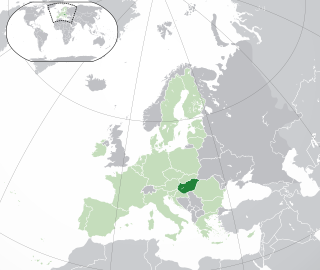 W
WThe history of the Jews in Hungary dates back to at least the Kingdom of Hungary, with some records even predating the Hungarian conquest of the Carpathian Basin in 895 CE by over 600 years. Written sources prove that Jewish communities lived in the medieval Kingdom of Hungary and it is even assumed that several sections of the heterogeneous Hungarian tribes practiced Judaism. Jewish officials served the king during the early 13th century reign of Andrew II. From the second part of the 13th century, the general religious tolerance decreased and Hungary's policies became similar to the treatment of the Jewish population in Western Europe.
 W
WNoémi Ban was a Hungarian-born American Jew and survivor of the Holocaust. Later in life she was a Golden Apple Award-winning lecturer, public speaker, and teacher residing in Whatcom County, Washington.
 W
WRandolph Lewis Braham was an American historian and political scientist, born in Romania, Distinguished Professor Emeritus of Political Science at the City College and the Graduate Center of the City University of New York. A specialist in comparative politics and the Holocaust, he was a founding board member of the academic committee of the United States Holocaust Memorial Museum (USHMM), Washington, D.C., and founded The Rosenthal Institute for Holocaust Studies at the Graduate Center in 1979.
 W
WThe first record of the Jewish community in Bratislava, capital of Slovakia, dates from 1251. Until the end of World War I, Bratislava was a multicultural city with a Hungarian and German majority and a Slovak and Jewish minority. In 1806 when the city was part of the Kingdom of Hungary, Rabbi Moses Sofer established the Pressburg Yeshiva and the city emerged as the center of Central European Jewry and a leading power in the opposition to the Reform movement in Judaism in Europe. Pressburg Yeshiva produced hundreds of future leaders of Austro-Hungarian Jewry who made major influence on the general traditional orthodox and future Charedi Judaism.
 W
WThe Budapest Ghetto was a Nazi ghetto set up in Budapest, Hungary, where Jews were forced to relocate by a decree of the Government of National Unity led by the fascist Arrow cross party during the final stages of World War II. The ghetto existed only from November 29, 1944 - January 17, 1945.
 W
WThe Budapest University of Jewish Studies is a university in Budapest, Hungary. It was opened in 1877, a few decades after the first European rabbinical seminaries had been built in Padua, Metz, Paris and Breslau. Still, it remains the oldest existing institution in the world where rabbis are graduated.
 W
WBunzl plc is a British multinational distribution and outsourcing company headquartered in London, United Kingdom.
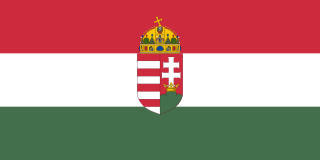 W
WCarpathian Ruthenia was a region in the easternmost part of Czechoslovakia that became autonomous within that country in September 1938, declared its independence as the "Republic of Carpatho-Ukraine” in March 1939, was immediately occupied and annexed by Hungary, invaded by the Soviet Red Army in 1944 and incorporated into the Ukrainian Soviet Socialist Republic in 1946. In total between 1939 and 1944 80,000 Carpathian Ukrainians perished.
 W
WJews settled in Transcarpathia as early as the 15th century. Local rulers allowed Jewish citizens to own land and practice many trades that were precluded to them in other locations. Jews settled in The region over timeand established communities that built great synagogues, schools, printing houses, businesses, and vineyards. By the end of the 19th century there were as many as 150,000 Jews living in the region.
 W
WJosé Arturo Castellanos Contreras was a Salvadoran army colonel and diplomat who, while working as El Salvador's Consul General for Geneva during World War II, and in conjunction with a Jewish-Romanian businessman named György Mandl, helped save up to 50,000 Central European Jews, most of them from Hungary, from Nazi persecution by providing them with fake Salvadoran citizenship certificates.
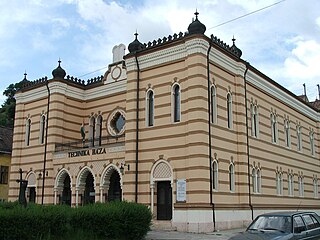 W
WThe Esztergom Synagogue is a building located in the town of Esztergom, Hungary. It was built in 1859, renovated in 1888, and severely damaged by a bombing during World War II. Since almost all Jewish people in the town were deported during the Holocaust and Communists subsequently gained control of the country, it has not been used for religious purposes since the 1940s.
 W
WMaximilian Jaeger (1884–1959) was a Swiss Minister in Budapest from 1925 to 1944. Between 1925 and 1938 he was headquartered in Vienna and from 1938 until 1944 Swiss Minister in Budapest.
 W
WThe Kolozsvár Ghetto was one of the lesser-known Jewish ghettos of the World War II era. The ghetto was located in the city of Kolozsvár, then Kingdom of Hungary. Between the signing of the Treaty of Trianon in 1920 and the Second Vienna Award in 1940, Cluj was a part of "Greater Romania". In 1947, the Paris Peace Treaties gave back Northern Transylvania to Romania.
 W
WThe Kunmadaras pogrom was an anti-Semitic pogrom that took place shortly after the Second World War in Kunmadaras, Hungary.
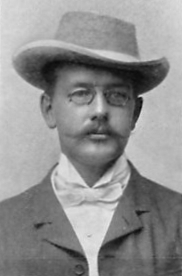 W
WValdemar Langlet was a Swedish publisher, and an early Esperantist. With his wife Nina Borovko-Langlet in Budapest, he is credited with saving many Jews from the Holocaust, by providing Swedish documents saying that people were waiting for Swedish nationality. Raoul Wallenberg was inspired by Langlet and used the same method to save Jewish people when he came to Budapest. In 1965, Valdemar and Nina Langlet were recognized as Righteous Among the Nations by Yad Vashem.
 W
WThe Last Days is a documentary, directed by James Moll and produced by June Beallor and Kenneth Lipper in 1998. Steven Spielberg was one of the executive producers, in his role as founder of the Shoah Foundation. The film tells the stories of five Hungarian Jews during the Shoah. It focuses on the horrors of life in the Nazi concentration camps, but also stresses the optimism and desire to survive of the survivors.
 W
WCarl Lutz was a Swiss diplomat. He served as the Swiss Vice-Consul in Budapest, Hungary from 1942 until the end of World War II. He is credited with saving over 62,000 Jews, the largest rescue operation of Jews of the Second World War.
 W
WMăeriște is a commune located in Sălaj County, Crișana, Romania.
 W
WMunkatch Hasidism is a Hasidic sect within Haredi Judaism of mostly Hungarian Hasidic Jews. It was founded and led by Polish-born Grand Rebbe Shlomo Spira, who was the rabbi of the town of Strzyżów (1858-1882) and Munkacs (1882-1893). Members of the congregation are mainly referred to as Munkacs Hasidim, or Munkatcher Hasidim. It is named after the Hungarian town in which it was established, Munkatsh.
 W
WNadvorna is a Hasidic rabbinical dynasty within ultra-Orthodox Judaism. The dynasty derives its name from the town of Nadvorna, known in Ukrainian as Nadvirna. The town was located in the province of East Galicia in the Austro-Hungarian Empire, until World War I; and between the two world wars, the town was located in eastern Poland.
 W
WThe Oradea ghetto was one of the Nazi-era ghettos for European Jews during World War II. It was located in the city of Oradea in Bihor County, Transylvania, now part of Romania but administered as part of Bihar County by the Kingdom of Hungary from the 1940 Second Vienna Award's grant of Northern Transylvania until late 1944. The ghetto was active in the spring of 1944, following Operation Margarethe.
 W
WGiorgio Perlasca was an Italian businessman and former fascist who, with the collaboration of official diplomats, posed as the Spanish consul-general to Hungary in the winter of 1944, and saved 5,218 Jews from deportation to Nazi extermination camps in eastern Europe.
 W
WThe Pressburg Yeshiva, was the largest and most influential Yeshiva in Central Europe in the 19th century. It was founded in the city of Pressburg, Austrian Empire by Rabbi Moshe Sofer and was considered the largest Yeshiva since the time of the Babylonian Talmud.
 W
WKehillat Yaakov Pupa is a Hasidic dynasty named after the town of its origin, also known in Hungarian as Pápa. Before World War II, Pupa had an important yeshiva which produced many well-known ultra-Orthodox rabbis in Hungary. The whole community was deported to the Auschwitz concentration camp, and only a few people came back. Currently, there are no Jews in Pápa. The group is based in the Williamsburg section of Brooklyn, New York, with branches in the Boro Park section of Brooklyn, Monsey, New York, and Ossining, New York. It is headed by the Pupa Rebbe, who has several thousand followers.
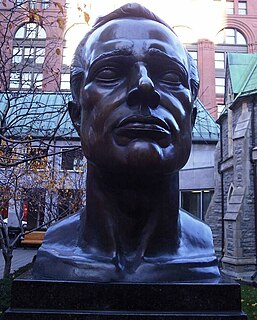 W
WThe Raoul Wallenberg International Movement for Humanity (RWIMH) is a non-profit organization dedicated to the education of the work of Raoul Wallenberg
 W
WSándor Scheiber was a Hungarian rabbi and an eminent Jewish scholar. From 1950 until his death he was director of the Rabbinical Seminary in Budapest.
 W
WThe Schism in Hungarian Jewry was the institutional division of the Jewish community in the Kingdom of Hungary between 1869 and 1871, following a failed attempt to establish a national, united representative organization. The founding congress of the new body was held during an ongoing conflict between the traditionalist Orthodox party and its modernist Neolog rivals, which had been raging for decades.
 W
WThe Shoes on the Danube Bank is a memorial erected on April 16 2005, in Budapest, Hungary. Conceived by film director Can Togay, he created it on the east bank of the Danube River with sculptor Gyula Pauer to honour the Jews who were massacred by Fascist Hungarian militia belonging to the Arrow Cross Party in Budapest during the Second World War. They were ordered to take off their shoes, and were shot at the edge of the water so that their bodies fell into the river and were carried away. It represents their shoes left behind on the bank.
 W
WThe Siebengemeinden were seven Jewish communities located in Eisenstadt and its surrounding area. The groups are known as Sheva Kehillot in Hebrew.
 W
WSiegendorf is a town in the district of Eisenstadt-Umgebung in the Austrian state of Burgenland.
 W
WYeshaya Steiner, was a Rebbe in the town of Kerestir (Bodrogkeresztúr) near Miskolc in Hungary.
 W
WKároly Szabó was an employee of the Swedish Embassy in Budapest from 1944 to 1945 when he rescued Hungarian Jews during the Holocaust. He was a supporter of Raoul Wallenberg and had a significant role in making contact with the representatives of the Hungarian police and other state officials. He was arrested without legal proceedings in 1953 in Budapest, in a secret trial.
 W
WTosh is a Hasidic dynasty originating in Nyirtass, Hungary. Today, it is based in Kiryas Tosh, Quebec, Canada, outside Boisbriand, Quebec, a suburb of Montreal, Quebec. The current leader is Grand Rabbi Elimelch Halevi Segal-Loewy, who succeeded his late father, Meshulim Feish Lowy, upon the latter's death on 12 August 2015. Tosher Hasidim have synagogues in the United States, in Boro Park, Williamsburg, Brooklyn, Kiryas Joel, and Monsey, as well as in Montreal and in London, England.
 W
WJews lived in the northern Hungarian town of Verpelét and the surrounding Heves county from the 15th century or earlier up to the late 17th century, after which they were excluded from the area. During the 19th century the Jewish population increased in the area, with 174 living in the town itself in 1880. Hungary's only wooden synagogue was in Verpelét. Jewish students also travelled in to study at the yeshiva established there in the early 20th century, which was closed down by the government in 1942. In 1944 under the German occupation the Jews of the area were sent for forced labour or killed at Auschwitz; only eleven returned to the town, and the synagogue has been converted for other use.
 W
WRaoul Gustaf Wallenberg was a Swedish architect, businessman, diplomat, and humanitarian. He saved tens of thousands of Jews in German-occupied Hungary during the Holocaust from German Nazis and Hungarian Fascists during the later stages of World War II. While serving as Sweden's special envoy in Budapest between July and December 1944, Wallenberg issued protective passports and sheltered Jews in buildings designated as Swedish territory.
 W
WThe Working Group was an underground Jewish organization in the Axis-aligned Slovak State during World War II. Led by Gisi Fleischmann and Rabbi Michael Dov Weissmandl, the Working Group rescued Jews from the Holocaust by gathering and disseminating information on the Holocaust in Poland, bribing and negotiating with German and Slovak officials, and smuggling valuables to Jews deported to Poland.
 W
W